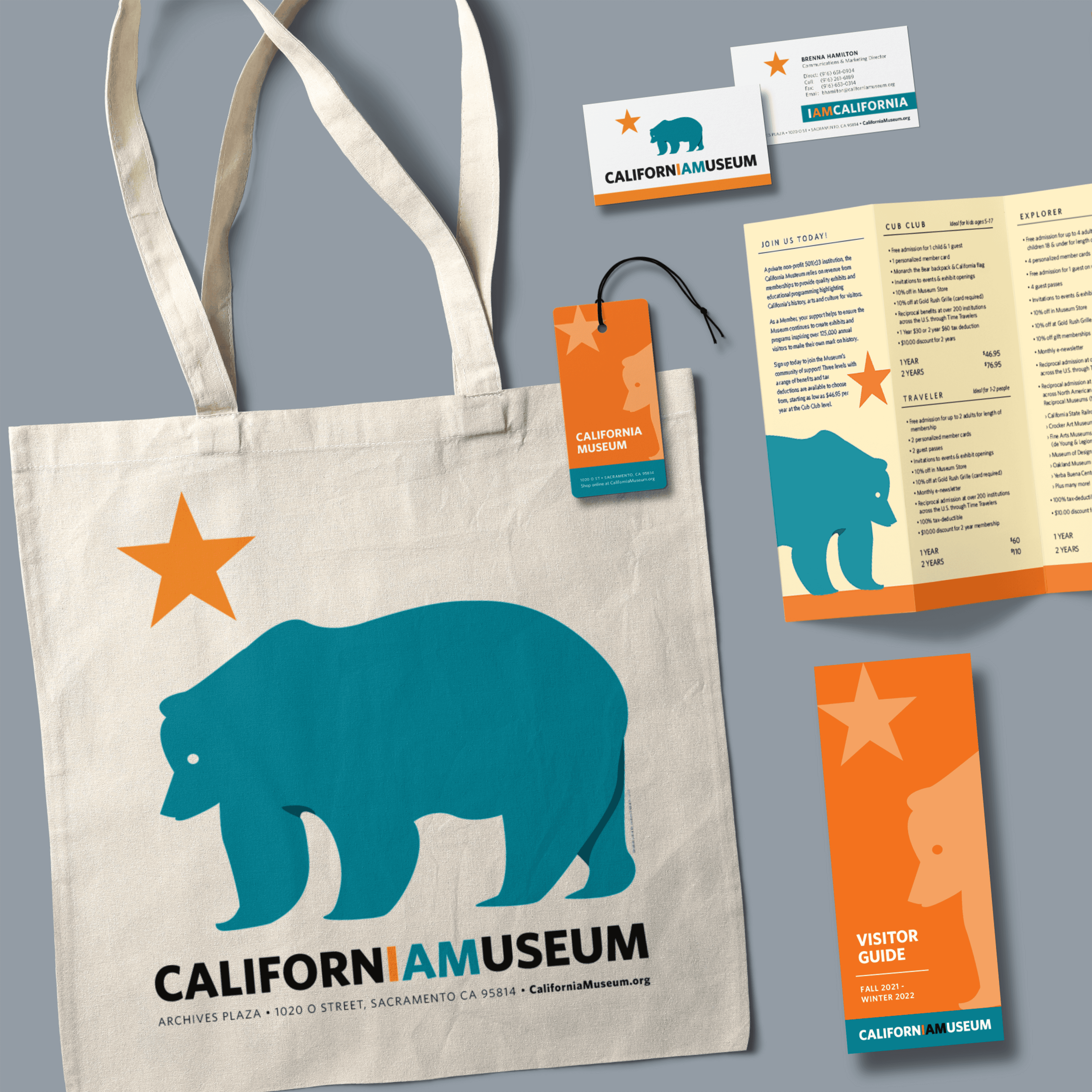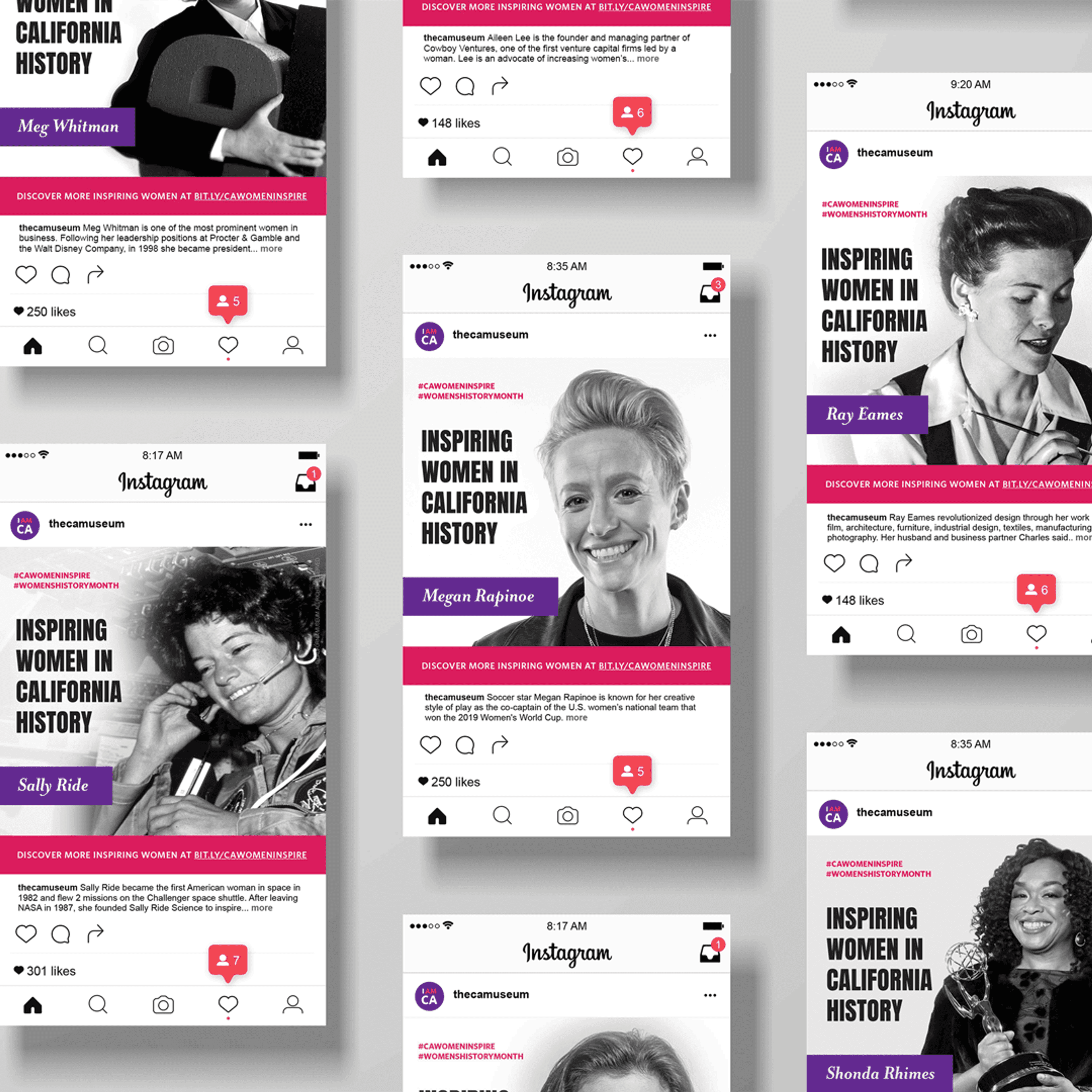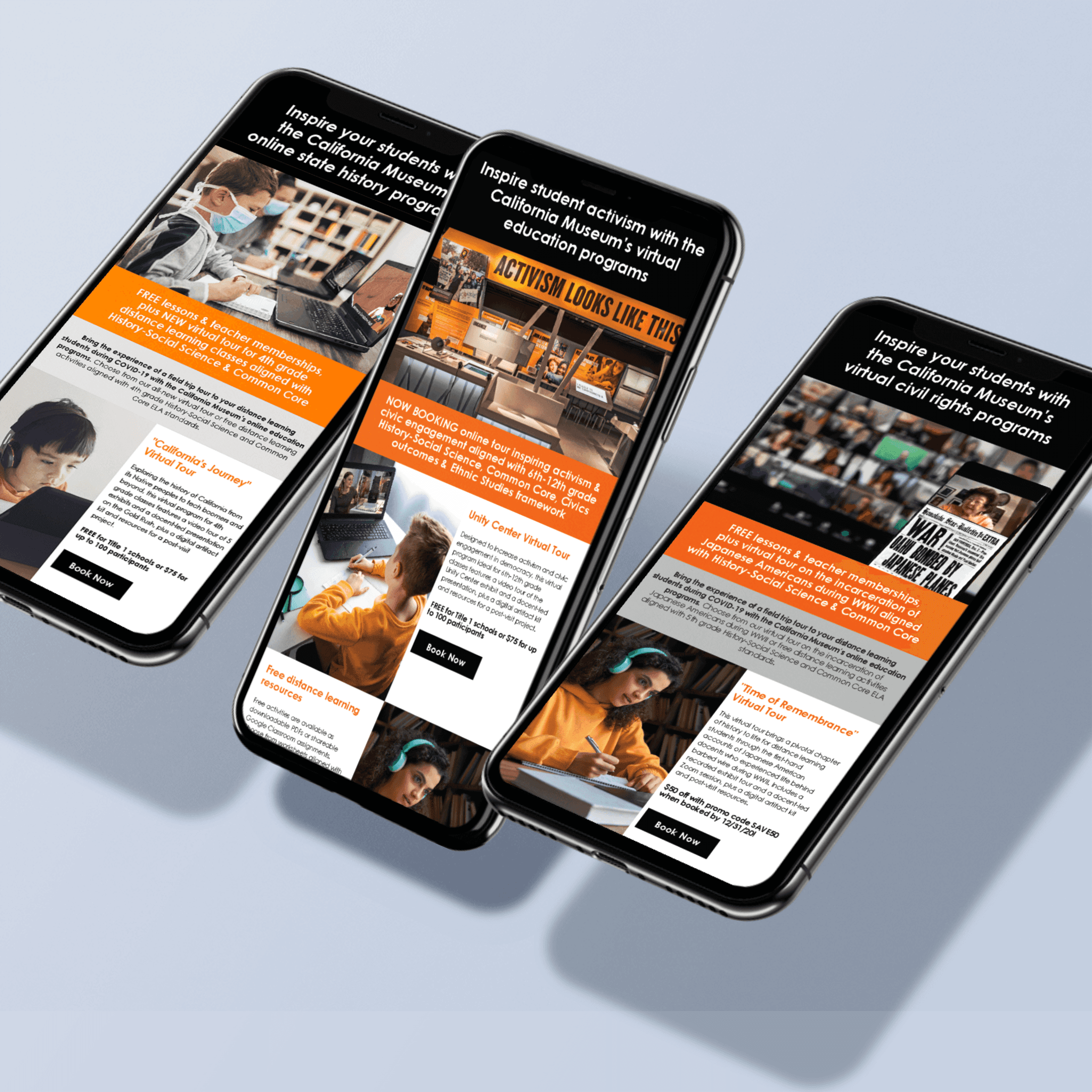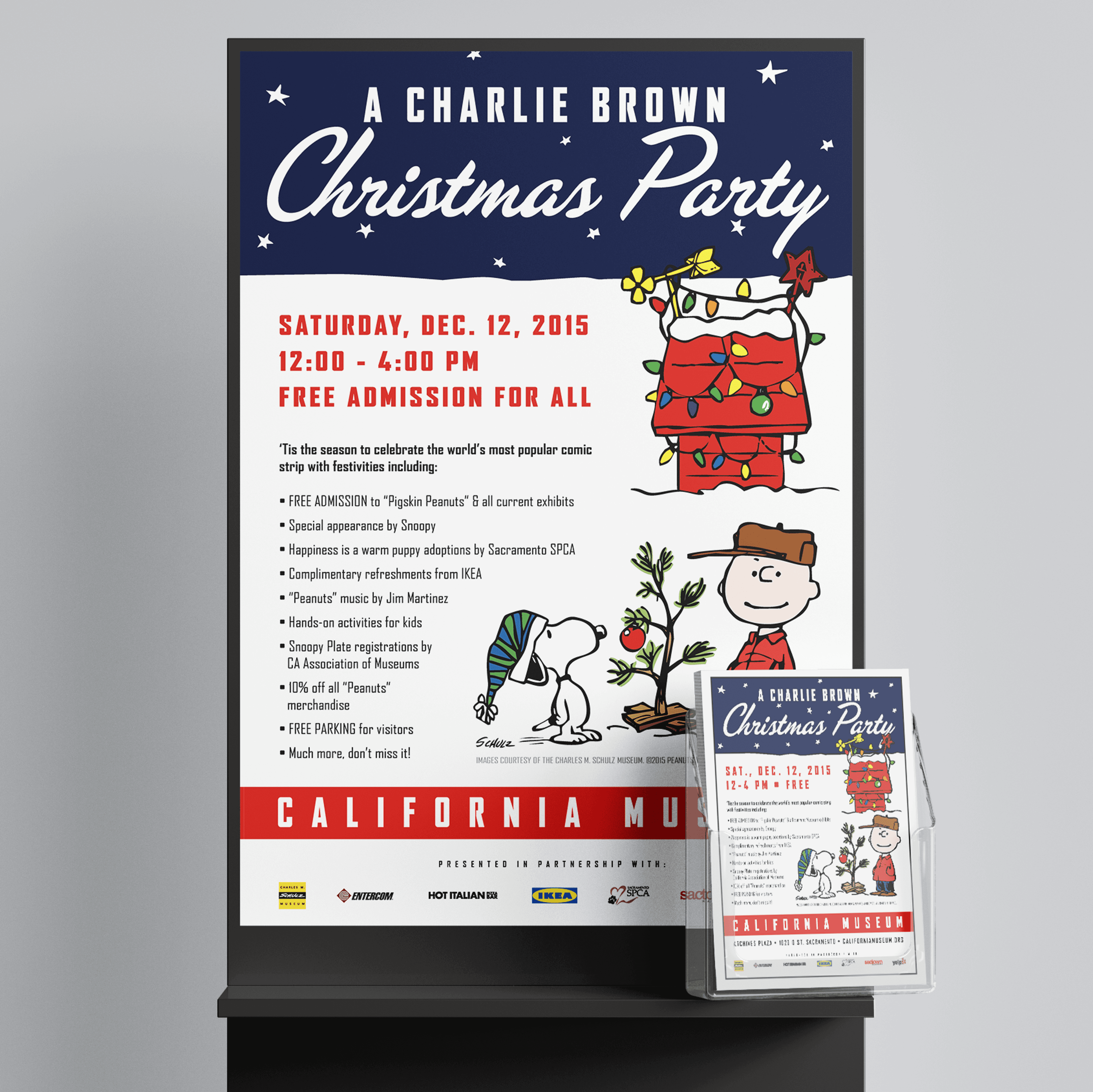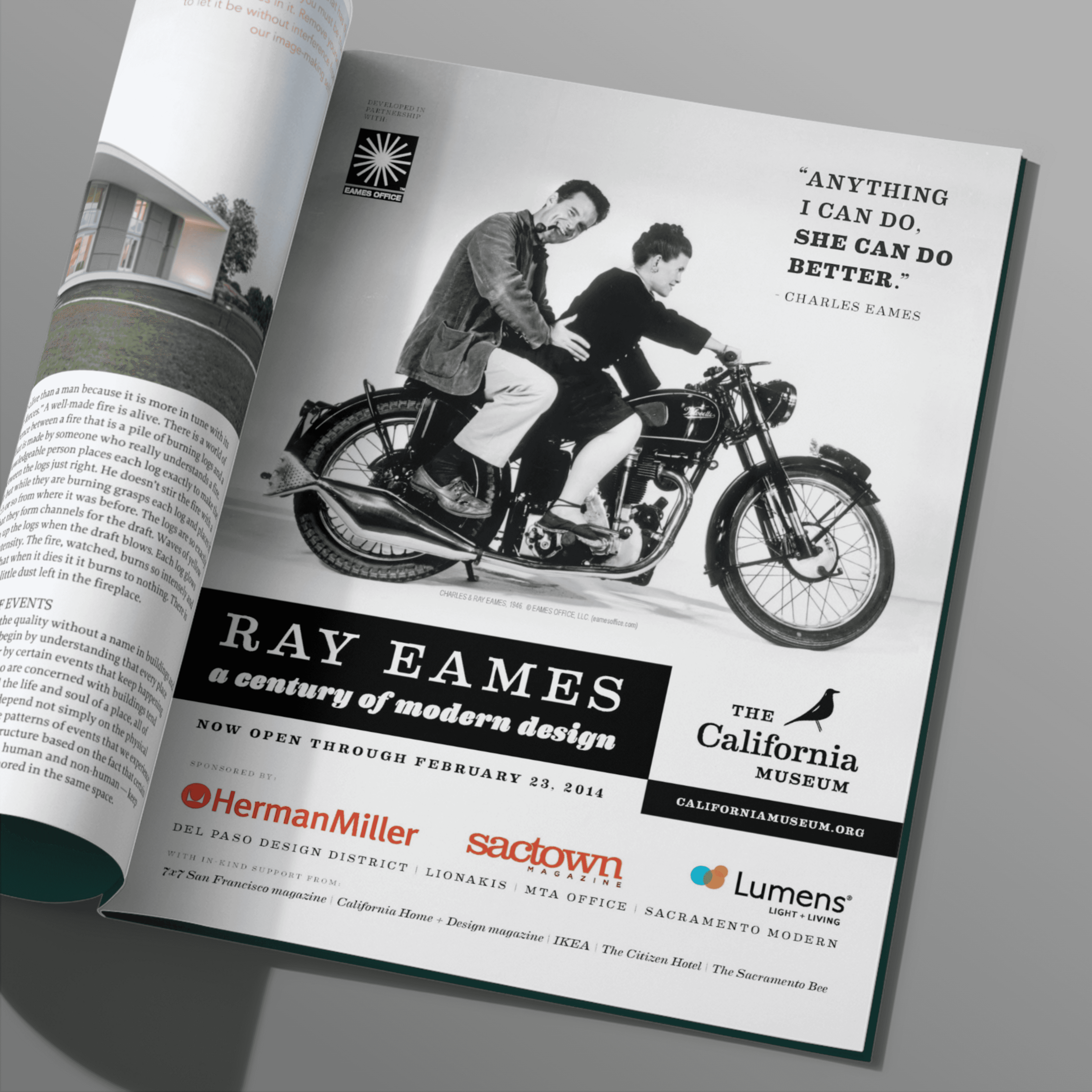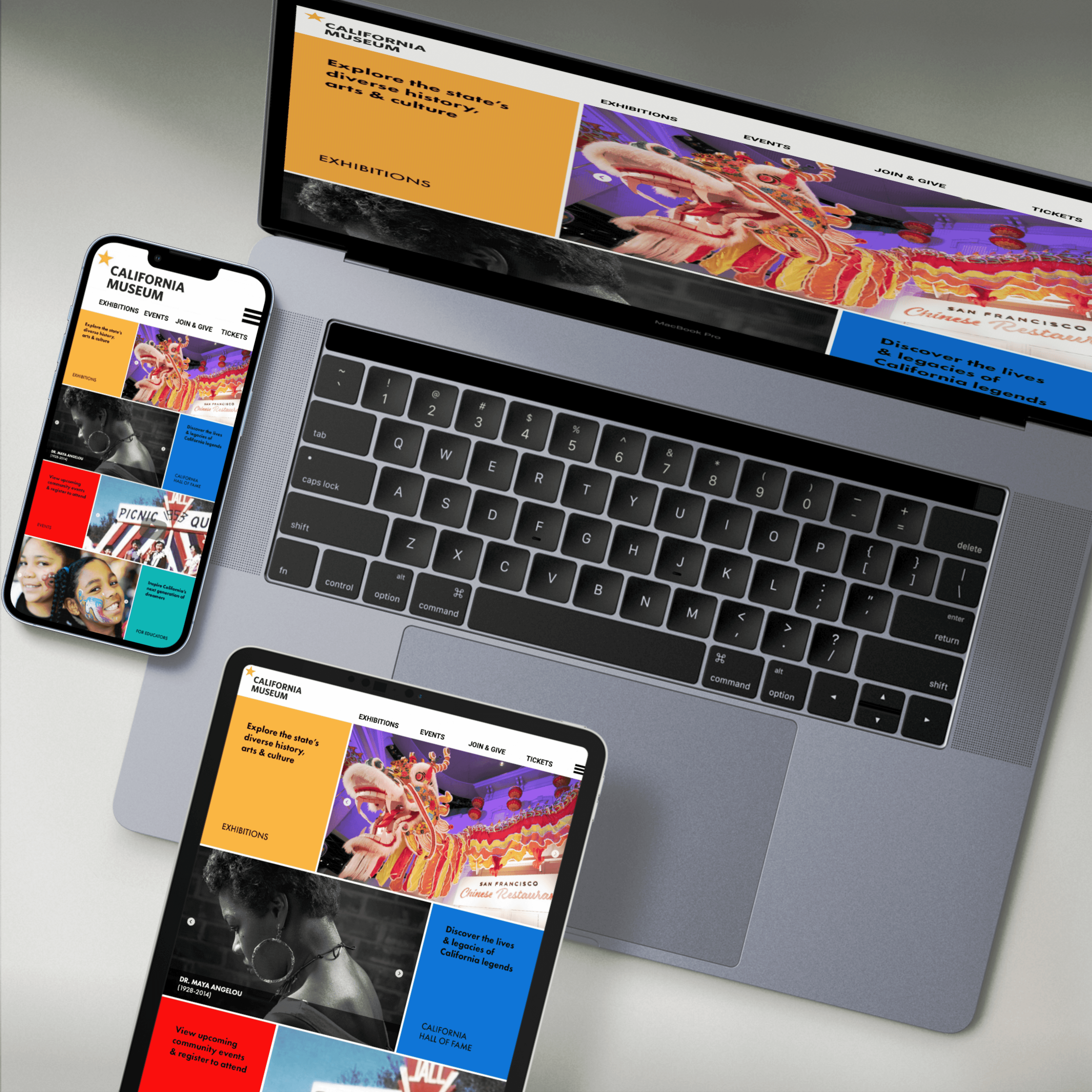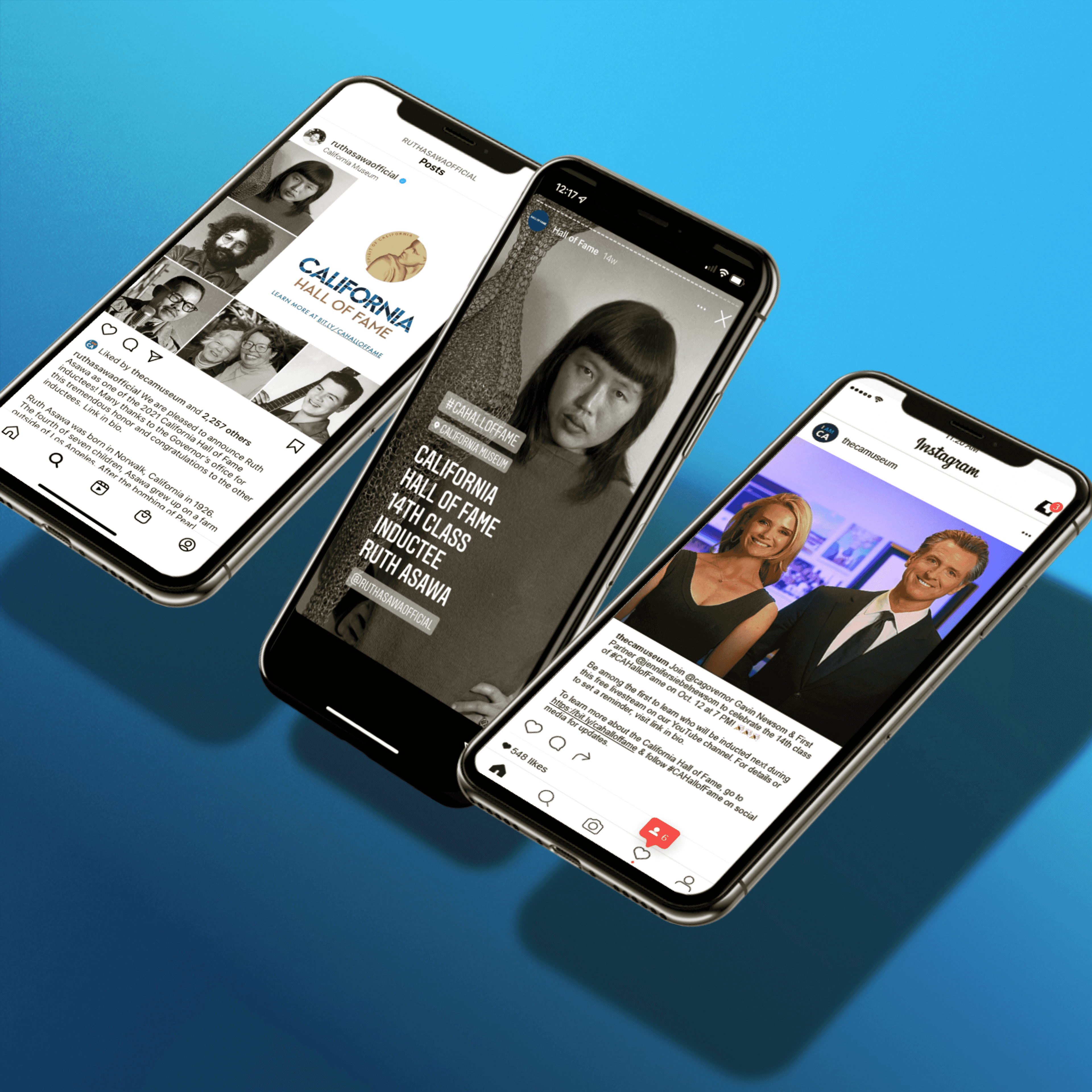SERVICES
BRANDING
Identities created with clear positioning and applied to collateral materials consistently help elevate recognition and lay the foundation for ongoing relationships by building trust with audiences.
The California Museum's branding was updated with modern illustrations of two symbols associated with the state, a grizzly bear and a star, to visually communicate the Museum's purview and establish it as a destination dedicated to the Golden State. Prior to the refresh, the organization's logo used the California Hall of Fame medal as its primary iconography, which was mistaken for a coin and failed to illustrate the Museum's mission and the range of California-centric topics covered in programming.
Additional projects are available by request.
CONTENT & SOCIAL MEDIA
Content development and social media campaigns add value to brands for targets and allow marketers the ability to communicate faster, more often, and with greater relevance. They also increase recognition through sharing, provide greater customer insights through interactions and improve conversions by moving followers through the customer journey.
A content campaign featuring the stories of a diverse cross-section of exhibit subjects and trailblazing women in California history created for the California Museum promoted the exhibit “Women Inspire: California Women Changing Our World” during Women’s History Month. Published daily on Facebook, Instagram, and Twitter, the campaign increased the Museum's share of voice by 250%, followers by 155%, and online exhibit engagement by 140%.
Additional projects are available by request.
DIGITAL CAMPAIGNS
Digital campaigns are unprecedented vehicles for building relationships with target audiences and with current and past customers. They also offer the best ROI and can easily be modified mid-campaign to create more relevant interactions and better results.
The California Museum’s online field trips launched in a digital campaign targeting teachers of grades and subjects covered in the programs and aligned with State Content and Common Core standards. The campaign featured free resources available to all California K-12 educators during distance learning, resulting in a 35% open rate and a 5% CTR on Facebook.
Additional projects are available by request.
EVENTS & ENVIRONMENTS
As a marketing tactic, events grow awareness, credibility and leads. They offer personal experiences with products and services to consumers and real-time feedback and sales to marketers.
The California Museum hosted the special event “A Charlie Brown Christmas Party” as a holiday promotion for its presentation of the traveling exhibit “Pigskin Peanuts.” Festivities aimed at families with children including free admission and refreshments, an appearance by Snoopy, live performance of “Peanuts” music, local SPCA adoptions, discount on “Peanuts” merchandise, and hands-on crafts for kids help boost general attendance by 320% and store sales by 140%.
Additional projects are available by request.
PRINT, RADIO & TV ADVERTISING
Traditional advertising remains an effective channel for reaching targets, particularly when run as a tactic in a multi-channel approach.
This print ad for the California Museum's exhibition celebrating the legendary designer Ray Eames was strategically placed in Dwell, California Home + Design, and other print vehicles with readership interests in furniture, architecture, and art. Run in conjunction with digital ads tracking lead sources, the campaign increased out-of-town visitor attendance by 250%.
Additional projects are available by request.
TV & VIDEO CONTENT
Videos and animated graphics used in digital and social campaigns are exponentially more effective than their static counterparts, generating up to 1,200% more shares and 60% greater engagement. Viewers also retain approximately 95% of a video message compared to only 10% when reading static text.
This is one in a series of short hand-animated videos promoting the California Museum's Dia de Los Muertos Fiesta event in paid digital ads and published social posts. The resulting 3-week campaign sold 2,000 tickets, increased social engagement by 300%, and earned a 2,000% return on investment.
View more at https://www.youtube.com/@BrennaHamilton
UX/UI & SITE DEVELOPMENT
User experience and user interface design builds recognition, trust and relationships with users when platforms are easy to navigate and showcase engaging content. In turn, improved user experiences and interactions on the front result in better SEO and conversions for marketers on the back end.
The California Museum’s original website was a virtual location for its onsite programs and provided visitors with interactive activities on the state’s history and culture. Built largely in Flash and funded by a grant from Adobe, the site was attractive but not mobile-friendly and became cost-prohibitive to update and the victim of decreased search rankings. Two redesigns in 2013 and 2020 addressing navigation and functionality on the front end generated 70% more leads, reduced bounce rates by 20% and organic visibility by 27%.
Additional UX/UI projects are available by request.
MORE TO EXPLORE
View the strategy and results of the 14th California Hall of Fame's multi-channel campaign encompassing social media, media outreach, public relations, and digital marketing.
